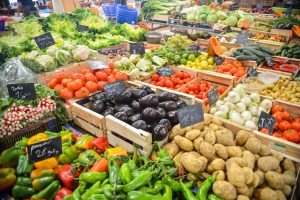In this modern world, we often have to eat out. However, for home cooked meals, we have to be sure the ingredients are from a reliable source. There are several ways for us to ensure the choices we make are healthy ones.
We often wonder if the food we eat is nutritious and that it would make us healthy and keep us healthy. We would naturally prefer foods that are sourced from naturally grown, pesticide-free produce and animals fed with natural feed meals. However, when humans decided to produce food based on quantity rather than quality, most farms have become manufacturing plants, i.e., mechanising their processes. Since then, food has become overly processed in order to allow for a long shelf life, which minimises production costs due to optimal production size and ensuring larger profit margins.
We also live in a time when we are unsure of the food that we eat every day, whether it is real or fake. We read of artificial cabbages and eggs from China. We have unclear food labelling of products from the United States. It has the Food & Drug Administration (FDA) which is supposedly meant to protect its consumers. However, producers often circumvent these rules by saying half-truths, i.e., they are not absolutely lying as it falls within the limits of the FDA rules. Some so-called healthy food choices are not, but since their sugar content falls below the minimum, they claim to be. Often fructose is added too.
As a man in the street, I suggest we choose free-farmed meat and poultry. Free-farmed products remain on pasture from birth to market. Cattle raised this way thus, consume a natural diet of legumes and grasses of their choosing.
Beware though that sometimes terms such as ‘free-roaming’ or ‘hormone free’ are used to express the products are safe, although they may not be. ‘Hormone-free’ and ‘antibiotic-free’ only guarantee the meat or poultry product had undetectable traces of antibiotics or hormones at the time of slaughter or processing. These are readings made which use samples of the products at that point in time, and may not represent all that is actually produced.
I suggest we use common sense to check our food that we buy. Some tests include smelling the items to be bought and choosing products that have shorter shelf life, meaning the product is as close to being in its natural form. For example, when we buy milk in the grocery store, and their expiry date is another year or more than six (6) months, I would think that it has been processed so much to allow milk to stay fresh for so long. So we should choose milk or milk products with shorter expiry dates.
As a rule of thumb, if the product has a longer shelf life, it means it has been processed extensively.
In summary, we should do the following:
- Smell the item. If they are vegetable produce, smell the items to be bought.
- Check the expiry date. As I said earlier, shorter expiry indicates a more natural product.
- Read labels for additives and preservatives added. They are usually better if none are added.
- Check that the ingredients used are from natural sources.
- Check for sugar and salt content, if provided.
- Check the fat used is not trans fat.
Good luck in your food choices. Do not eat too much of a certain food. Be moderate always.
